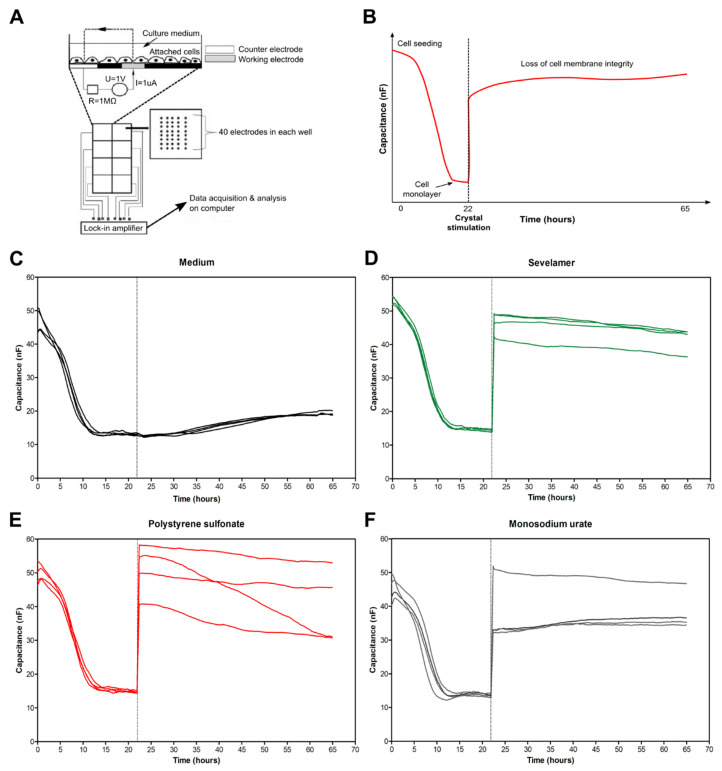Figure 4.
Crystals of ion-exchange resins induce intestinal epithelial barrier dysfunction. (A) Schematic of the electric cell-substrate impedance sensing (ECIS) working principle. Caco2 cells (30,000 cells/well) were grown on electrodes and covered in culture medium. The electrodes were connected to a lock-in amplifier and an AC signal was applied via a 1MX resistor to create a constant current. There are 40 electrodes in each well to measure the average capacitance in approximately 2000–4000 cells. Capacitance was applied at 16,000 Hz. (B) Schematic of the ECIS analysis. Cells were seeded on electrodes and when they were confluent after 22 h, the capacitance became stable. Afterwards, the medium was changed and the cells were stimulated with or without different crystal types for up to 65 h. Data are presented as normalized capacitance. (C–F) Images show the capacitance (nF) of Caco2 cells cultured in the medium alone (C), with sevelamer (1000 µg/mL) (D), polystyrene sulfonate (1000 µg/mL) (E), or monosodium urate (1000 µg/mL, positive control) (F) crystals (n = 4).

